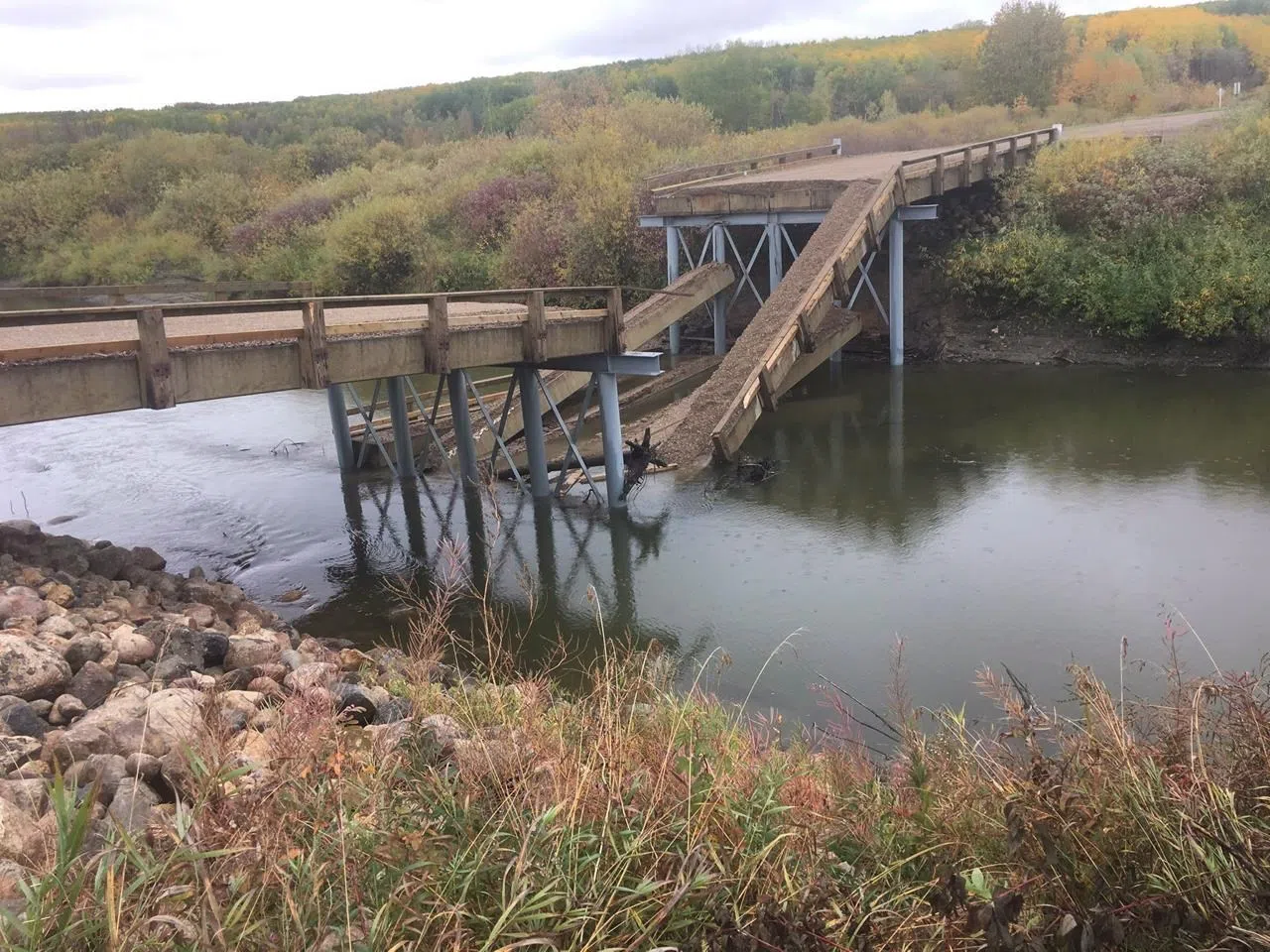
No geotech study done on Saskatchewan bridge that collapsed on opening day
HYAS, Sask. — A reeve in eastern Saskatchewan says no geotechnical investigation was performed on a riverbed where a newly built bridge collapsed only hours after opening.
The Dyck Memorial Bridge in the Rural Municipality of Clayton opened to traffic on the morning of Sept. 14. But later that same day, part of the deck collapsed into the Swan River below. No one was injured.
David Elwood, a University of Saskatchewan professor specializing in geotechnical engineering, said he thinks it’s strange tests weren’t done before the bridge was built to determine what sub-surface conditions were like.
Conducting boreholes tests would have given an indication of where the foundation should stop, how deep a contractor needs to drill and how much steel should be used for the piles.


